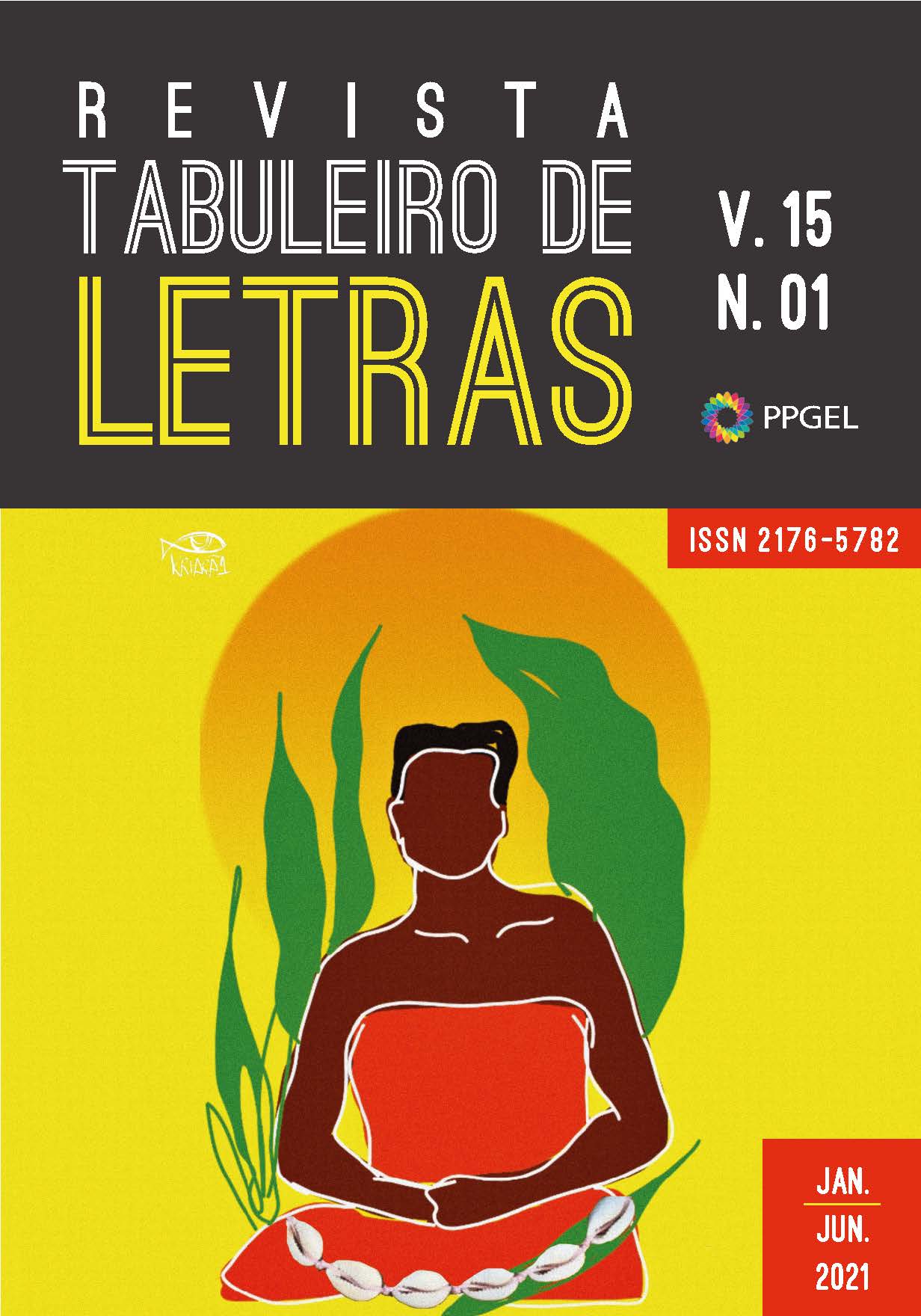Interlanguage aspects in Portuguese Foreign language: Syntactic Structures
Estruturas sintáticas
DOI:
https://doi.org/10.35499/tl.v15i1.11363Abstract
The learning process and the use of the Portuguese as a foreign language reveal particular linguistic and strategic aspects regarding construction of sentences, especially in the first stages of learning process. The aim of this paper is to identify and describe tendencies of speakers of Shona and English when constructing simple sentences in Portuguese. The study is informed by principles of interlanguage, and it adopts a qualitative approach. Data comprises syntactic structures (simple sentences and phrases) written by first and second-year university learner of the Portuguese language. Results reveal the following tendencies: (1) omission of verbs in simple sentences, (2) the use of two verbs in simple sentences, (3) lack of agreement of grammatical person and number between verbs and subjects, (4) irregular combination of verbs and arguments (subjects and objects), (5) the use of transitive verbs as non-transitive ones, and (6) non-target nominal agreement of grammatical gender and number. All these tendencies, however, can be analyzed considering manifestations of different stages of interlanguage.
Downloads
References
CORDER, S. P. Error analysis and interlanguage. Oxford: Oxford University Press, 1981.
CUNHA, C.; CINTRA, L. Nova gramática do Português contemporâneo. Lisboa, J.S. da Costa, 2005.
ELISEU, A. Sintaxe do Português. Lisboa: Caminho, 2008.
ERNESTO, N. Ensino estratégico da gramática na aula de português língua não materna. 319f. Lisboa: Universidade Nova de Lisboa (Tese de Doutoramento Metodologias de Ensino de Português com Língua não Materna, 2015), 319p.
GONÇALVES et al. Panorama do Português oral de Maputo – estruturas gramaticais do Português: problemas e exercícios. Maputo: INDE, 1998.
GONÇALVES, P. A génese do Português de Moçambique. Lisboa: Imprensa Nacional Casa da Moeda, 2010.
______. Aspetos da sintaxe do Português de Moçambique. In: FARIA et al.. Introdução à linguística geral e portuguesa. Lisboa: Caminho, 1996, p. 313-322.
______. Tipologia de ‘erros’ do português oral de Maputo: um primeiro diagnóstico. In: STROUD, C.; GONÇALVES, P. (Org.). Panorama do português oral de Maputo: A construção de um banco de erros. Maputo: Instituto Nacional do Desenvolvimento da Educação, 1997; p. 37-67.
INVERNO, L. Contact-induced restructuring of portuguese morphosyntax in interior Angola: Evidence from Dundo (Lunda Norte). 475f. Coimbra: Universidade de Coimbra (Dissertação Doutoramento Lingística Portuguesa), 2009, 475p.
KRASHEN, S. Second language acquisition and second language learning. New York: Pergamon Press, 1981.
______. The input hypothesis: Issues and Implications. UK: Longman, 1985.
LEIRIA, I. Léxico, aquisição e ensino do Português europeu língua não materna. Lisboa: FCG/FCT 2006.
MARTINS, C. Número e gênero nominais no desenvolvimento das interlínguas de aprendentes do Português europeu como língua estrangeira. Revista científica da UEM: série letras e ciências sociais, v. 1, n. 1, 2015, p. 26-51. [online]. Disponível em: http://www.revistacientifica.uem.mz/index.php/seriec/article/view/93/54, [28 April 2017].
NHATUVE, D. Aspetos de concordância nominal em português língua estrangeira por falantes de língua materna bantu (shona) e de inglês língua segunda. 376f. Universidade de Coimbra, Faculdade de Letras e Culturas (Tese te Doutaramento em Linguística do Português), 2019, 376p.
______. Concordância nominal entre o artigo e o nome em português língua estrangeira. LINGVARVMARENA, v.11, 2020, p. 13-30.
______. Vogais temáticas, gênero e concordância nominal em PLE. REVISTA X, Curitiba, v. 12, n. 2, 2017, p. 8-24.
NHATUVE, D.; BWETENGA, T. R. Configuração do valor de número gramatical em português língua estrangeira: interlíngua ou problemas intrínsecos da língua portuguesa?. Linguagem & Ensino, Pelotas, v. 21, n. 1, 2018, p. 5 - 33.
NHATUVE, D.; CHIPARA, M. Aspectos de concordância verbal na aprendizagem do português língua estrangeira”. Mandinga – Revista de Estudos Linguísticos, Redenção-CE, v. 1, n. 2, 2017, p. 8-24.
PEREIRA, E. F. O. O papel da língua materna na aquisição da língua estrangeira. Inter-ação. Rev. Fac. Educ. UFG, v. 26, n. 2, 2001, p. 53-62.
PEREIRA, I.; MARTINS, C. Metodologias de ensino de PL2 à medida dos aprendentes. In: MATEUS, M. H. M. et al. (Org.) Metodologias e materiais para o ensino do Português como língua não materna. Lisboa: ILTEC, 2009, 31-36.
PINTO, J. A aquisição de português LE por alunos marroquinos: Dificuldades interlinguísticas. In: Atas del II congreso internacional SEEPLU - Difundir la lusofonia Cáceres: SEEPLU/CILEM/LEPOLL, 2012, 15p. [online]. Disponível wm: http://www.seeplu. galeon.com/textos2/pinto.pdf. [28 March 2017].
RAPOSO, E. P. et al. Gramática do Português. Lisboa: Fundação Calouste Gulbenkian, 2013.
SILVEIRA, D. T.; CÓRDOVA, F. P. Pesquisa Científica. In: GERHARDT, T. E.; SILVEIRA, D. T. (Org.) Métodos de pesquisa. Porto Alegre: Editora da UFRGS, 2009, p. 31-43.
VIEIRA, S. R.; BRANDÃO, S. F. Tipologia de regras linguísticas e estatuto das variedades/línguas: a concordância em português. In: Linguística, 30, 2014, p. 82-112. [Online], Available: http://repositorio.unesp.br/bitstream/ handle/114 49/86568/sagu ate_aw_me_sjrp.pdf?sequence=1. [28 March 2017].
Downloads
Published
How to Cite
Issue
Section
License
Autor(es) conservam os direitos de autor e concedem à Revista o direito de primeira publicação, com o trabalho simultaneamente licenciado sob a Licença Creative Commons Attribution que permite a partilha do trabalho com reconhecimento da autoria e publicação inicial nesta Revista.

















